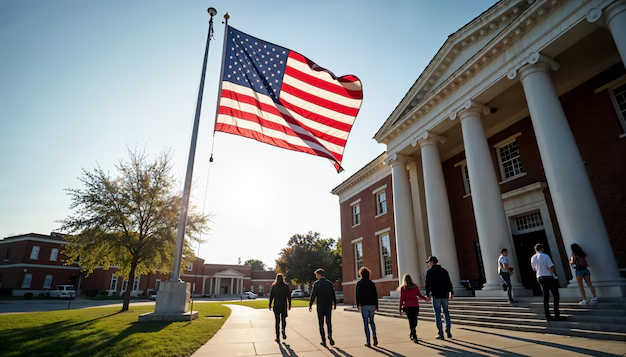Following the US Supreme Court’s Ban on Affirmative Action, Enrollment of Students of Color at Universities Declines
In the wake of the US Supreme Court’s ban on affirmative action in college admissions in June 2023, universities across the nation are facing challenges in increasing campus diversity, as new data reveals concerning trends.
Recent statistics indicate significant declines in Black, Latino, and Indigenous first-year enrollment at several prestigious institutions, including the Massachusetts Institute of Technology, Cornell University, and Stanford. The University of North Carolina at Chapel Hill also reported reductions, with Black and Latino student enrollment dropping by at least 25% and 7%, respectively.
In response to the Supreme Court ruling, colleges like Carleton College, Occidental College, Virginia Tech, and Wesleyan University have decided to eliminate the consideration of legacy status in admissions. This practice traditionally gives preference to applicants with familial ties to alumni. Additionally, states such as Virginia, Illinois, California, and Maryland have outright banned legacy admissions for public universities.
“We’re committed to creating diverse classes and understand the implications of our admissions policies,” said Alison Byerly, president of Carleton College. She expressed concern that favoring legacy applicants might signal that those without a familial college background are less valued. However, Dominique Baker, an associate professor at the University of Delaware, cautioned that removing legacy admissions alone may not significantly change enrollment demographics. “While it’s ethically sound to eliminate legacy preferences, it’s not a guaranteed solution for increasing diversity.”
Legacy admissions have long been a staple in American higher education, particularly at private and selective institutions. Originating in Ivy League schools in the 1920s, legacy admissions were initially used to limit Jewish enrollment. Although explicit discrimination against Jewish students has ceased, many universities maintain legacy policies to nurture alumni relationships and secure funding.
Results regarding the impact of reduced legacy admissions on diversity have been mixed. At Carleton College, 13.6% of admitted students for the 2024-25 academic year had a legacy connection, a slight decrease from 15.7% the previous year. Byerly noted that the reasons for this minor drop are uncertain and could be attributed to fluctuations in student demographics.
The University of Minnesota Twin Cities, which has also ended legacy admissions, reported that around 21% of admitted students in the 2024-25 year had familial ties to the university, remaining consistent with prior years. Keri Risic, the university’s executive director of undergraduate admissions, attributed this stability to the large number of living alumni in Minnesota.
Wesleyan University, which discontinued its legacy program in 2023, observed a small increase in Black and Latino first-year students, rising from 11% and 10% for the class of 2027 to 12% for the class of 2028. However, the extent of legacy admissions’ impact remains unclear.
Experts highlight that the majority of those with legacy connections are often white and wealthy, with legacy admissions accounting for a significant portion of enrollments at top universities. A 2018 report indicated that legacy admissions could comprise up to 10-25% of total admissions at elite institutions. This trend reflects historical inequities in access to education for students of color, limiting their potential benefits from legacy preferences.
Richard Kahlenberg of the Progressive Policy Institute emphasized that if universities reserve spots for legacy students, they are likely excluding qualified students of color who could contribute to campus diversity.
Experts agree that universities must proactively engage in recruitment efforts to ensure equitable representation. This includes examining other admissions practices that may disproportionately disadvantage students of color, such as reliance on standardized testing or emphasis on Advanced Placement (AP) courses.
“Are schools actively reaching out to diverse communities to identify strong candidates?” asked Sarah Hinger, deputy director of the Racial Justice Program at the ACLU. “Are they using admission criteria that unnecessarily exclude opportunities?”
Carleton College has also sought to increase enrollment among first-generation students and those eligible for federal Pell grants, similar to strategies employed by Duke University, which has successfully boosted Black and Latino enrollment despite the Supreme Court ruling.
However, experts caution that there is no quick solution to improving diversity, particularly following the rollback of race-conscious admissions, and that meaningful change will take time.
“Institutions are experimenting with their recruitment and admissions processes to uphold diversity in compliance with the law,” Baker noted. “However, many universities are hesitant to publicly disclose their efforts to avoid legal repercussions. Understanding the full impact of these changes will take considerable time.”


